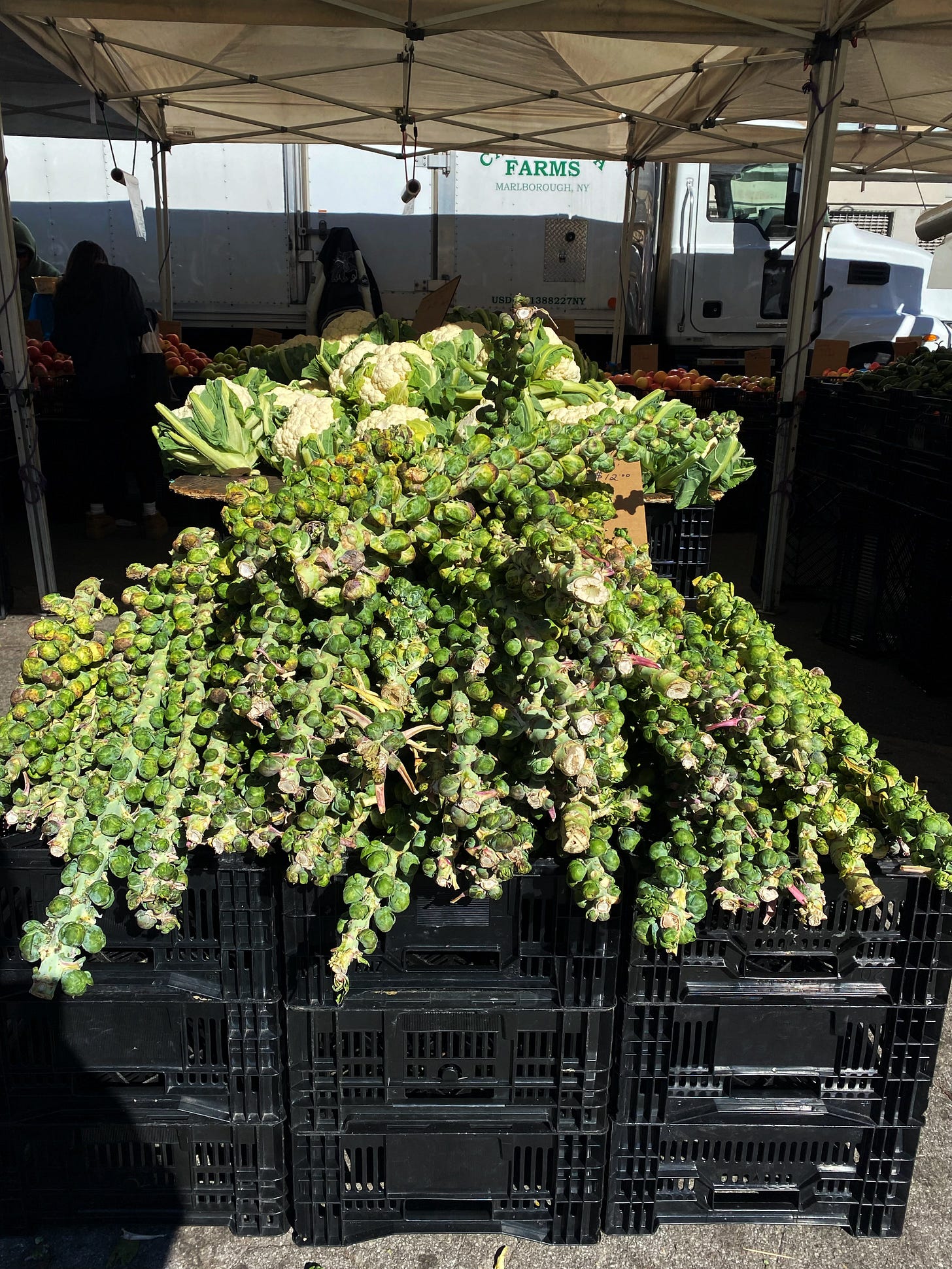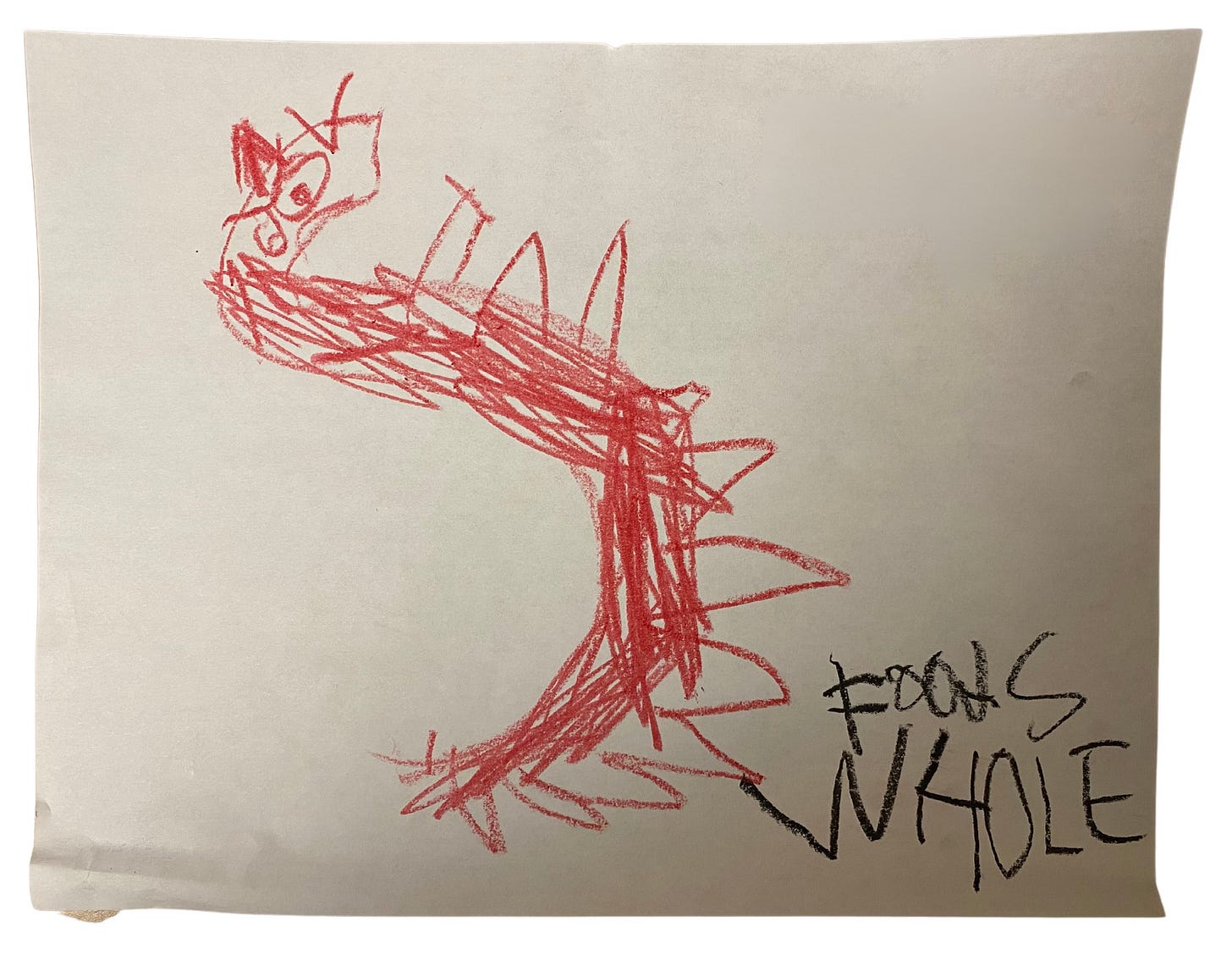I’ve recently noticed that many parents are choosing to run their errands alone.
Maybe errands are their “me time,” or perhaps they’re in a rush? Both valid.
I’m going to argue that we should view errand runs as necessary life experiences for a few reasons:
They’re semi-repetitive, predictable routines and our brains love routines
They help us to fulfill our basic needs
They make us feel accomplished, even when it’s the smallest task
They give structure to our day and/or week
They provide us opportunities to interact with many different people
Which is why, as a speech-language pathologist, I think one of the best things you can do for your children is take them to the grocery store.

My parents took me along on many errands from a very young age. Reflecting on those personal experiences through a professional lens, I now recognize just how much I learned on those outings. Especially my trips to the grocery store. Oh, and trips to Disney World, but that’s for another day.
Today we’re focusing on the important language-based life skills children learn going grocery shopping.
Talking respectfully to strangers
When we enter a communal space, like a grocery store, it should be important to communicate respectfully to the people around us. Respectful communication is not automatic. We learn this through adult’s and older peers’ modeling in addition to direct instruction. Speaking respectfully necessitates coordinating our tone of voice, our word choice, our vocal volume, and our conversational pacing to sound “polite.” Adequate perspective taking skills are also key for self-monitoring and quickly adapting when signals become misinterpreted as rude.
At the grocery store, we don’t just act respectfully in the way we verbally communicate. We also have to read non-verbal cues, like physical proximity to another person in the aisle and taking turns reaching for items on a shelf.
What happens when you and another customer are both grabbing for the last carton of milk at the same time? How do you figure out which person gets to take it home? Are you able to remain calm, respectful, and polite in this interaction, or are you acting entitled and demanding, rudely yelling at strangers?
We are the primary language models for our kids. We are the people responsible for teaching them how to politely engage in small talk with the cashier or respectfully ask an employee for help.
When you have a child who is neurodivergent, it’s helpful to narrate exactly why we speak to people who help us in a respectful way. Not all neurodivergent kids are able to perceive the nuances of conversational discourse, like tone of voice or the fact that we ask for help instead of demanding it. Point out rude behavior when you witness it, and explain why it’s inappropriate. Offer alternatives to the situation. Prepping them on the way to the grocery store, or processing a moment that occurred during your grocery run afterward, is a great way for them to learn this difference.
Seeing how items are organized
Parents are always asking me “How do I get my kids to clean up after themselves?” or “Why don’t my kids clean up, my whole house is such a mess!” Well, they need exposure to diverse versions of what “organized” can look like, and grocery stores are a perfect example. No shade to the state of your household.
Grocery stores are thoughtfully organized by item type into sections meant to guide your shopping process. Here’s a general map of my local Whole Foods:
Our kids may assume at first glance that food is organized by shape or color, because in the early stages of development that’s how their brains logically group information. Taking your kids to the grocery store teaches them that we can group items by use (baking aisle), composition (sweet vs. savory snacks), time of day (cereal aisle), temperature (fresh, frozen, and canned produce), and category (dairy, protein, fruit and vegetable, dry goods). Knowing that items in a store can overlap categories helps to expand their cognitive flexibility and grey area thinking, two skill areas that are vital for academic success. And well, life.
Besides unloading and organizing the groceries when you get home, this errand can also be a reference for organizing their play areas and rooms.1 You can tell them, “Let’s organize all of your toys like a store. You’re the store manager. We need to gather all of the blocks and put them on the same shelf. Store manager, do you want them on the top or the bottom?” Then follow their lead to clean up.
Exploring new and interesting foods
I’ve worked with many picky eaters over the span of my career, and even co-created a successful (statistically significant!) mealtime program with my extremely talented colleagues. One way we motivated kids to explore new foods of various textures was to take them on trips to our local grocery stores.
In a small group of two students, I would usually help the kids plan ahead for what type of food we wanted to “try” or “share with the class” for snack (they would usually pick out one fruit or vegetable each). There was no pressure for those kids specifically to eat it, but they needed to pick it out themselves and prepare it for their classmates. I printed out images of the food so they could locate it in the store, place it in a basket, checkout, and carry the food back to school with increasing levels of independence. Over time as the outing became routine, grocery shopping not only became the highlight of their week, but also proved to be a peer-driven incentive for tasting new foods.

Learning how to be bored
One realized reflection of my own childhood errand runs is that they were a passive experience. Meaning that sometimes I was involved in the action, which I often enjoyed (and if you know me, you know that that’s pretty on-brand), and other times I just followed along. Now, I was not always patient! In fact, many times by the third or fourth stop on an errand run I was probably really bored and made that known, but it is important—and natural—for kids to be bored. Their brains need the time to just passively take in the world around them. Let them zone out! Sing a song! Get curious!
Can boredom quickly lead to mayhem? Yes. Can it devolve into kids ripping things off shelves and throwing tantrums? Absolutely. That’s childhood.
The more opportunities they have to be bored or be given open-ended thinking time, the more patient they will become.
Reading familiar and unfamiliar words
Speaking of ways to fill open-ended thinking time—going to the grocery store is a wonderful opportunity to teach pre-literacy and reading skills! The grocery store is chock-full-o-words. Recognizing and identifying text in our environment is a necessary pre-literacy skill.
If your child is old enough to know the alphabet, you can play a game that involves looking for items corresponding to each letter. When they get a bit older and are starting to recognize simple sight words, you can playfully encourage them to search for those words as you navigate the aisles. Maybe as they begin to read connected text, reading an ingredients list (hopefully everything is natural and not a chemical compound that is too hard to read!) or a product description aloud is a motivating activity.
We want our kids to identify words in as many familiar and meaningful contexts as possible, building their background knowledge and increasing their reading fluency (i.e. speed and ease). If you are gaining a sense that your child may have difficulty reading, or perhaps they’ve been diagnosed with dyslexia, you can still play these types of games. In fact, consistent repetition of word games and activities out in the real world have the potential to lead to greater improvements in school regardless of neurodivergence2.
I would say like a toy store, but most people buy their toys online today, so they don’t have a Toys R Us to reference.
If you have questions about specific activities for your child, remember you can always reach out and schedule a private consultation with me! Email me at thecuratedchildhoodnyc@gmail.com or DM me here on Substack







I love this and am a little sad it has to be said. The rushing to do chores means kids are missing out on really important exposure to the big wide world. I’m glad took my kids to the supermarket and markets. They’re both foodies now they’re adults ✨
I love the section on how the store is laid out and organized. I’m a librarian and am always looking for ways to explain how our school library works to students. Makes me think about the difference between a store, whose primary objective is to sell something, and a library, where the objective is more learning and exploration. Lots of food for thought (ha!)